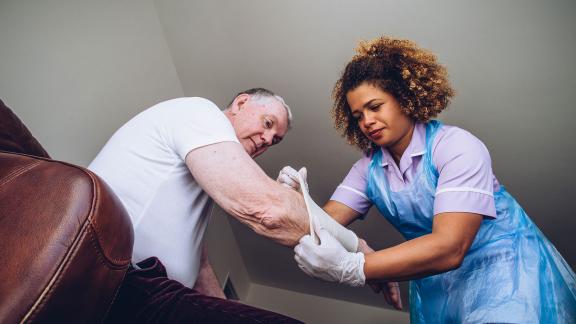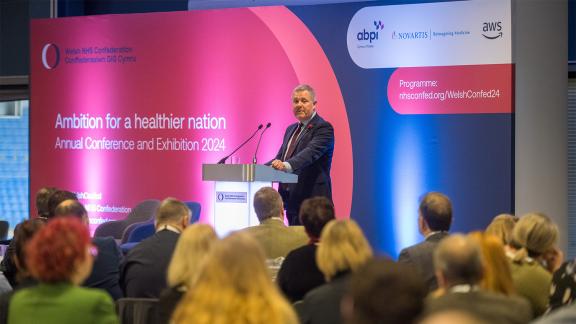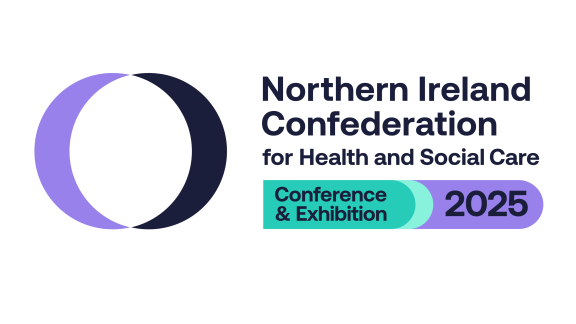Community services: my New Year’s resolutions

Andrew Ridley, chair of the Community Network supported by NHS Providers and the NHS Confederation and chief executive of Central London Community Healthcare Trust, sets out his ambitions for the community sector a year on from the publication of the NHS Long Term Plan.
As we begin the New Year, it feels like a natural time to reflect on past achievements and future plans. A year ago Matthew Winn, my predecessor as Chair of the Community Network, welcomed the publication of the Long Term Plan, and its ambition to make community services key partners in delivering better health outcomes for everyone.
The Plan, its promises of increased funding, and the appointment of Matthew to head up the Ageing Well programme, meant that 2019 got off to a very positive start. Twelve months on, how far have we come – and what would my New Year’s resolutions be for community services?
1. Provide community services with a level playing field
Historically, the community services sector has been a poor relation with regards to funding and resource. Repeated cuts to public health budgets have left local authority-commissioned health services particularly vulnerable. We plan a piece of work exploring the impact on the community sector of the ongoing cost pressures that local authorities face.
The Plan’s promise of a greater than average funding increase for community services could go a long way to addressing this imbalance. Yet recent announcements on capital investment for community services have been notable by their absence.
We’ll be making the case that any future spending review must allocate resource to community health services in an equitable way – including those public health services commissioned by local authorities. Providers cannot be expected to soak up increased costs in perpetuity, placing their staff under increasing stress and uncertainty. We’ll continue to push for a sustainable solution to the funding of agenda for change uplifts, and increased employer pension contributions, for staff in local authority funded services. We’ll also seek clarity on what the uplift in the public health grant will mean for providers of community services in the long term.
Community service providers are still disproportionately affected by procurement rules – with frequent competitive retendering a burdensome distraction from our core goals. As proposed NHS legislation progresses through parliament, we will work intensively to influence the details of these proposals constructively on behalf of our members.
2. Make community services key partners in the delivery of primary care networks (PCNs)
Over the next year, we will support the network’s members as they take up their roles in integrated health and care arrangements. We have been commissioned by NHS England and Improvement to deliver a neighbourhood integration project that will showcase the ways in which providers and local partners overcome the challenges that can hold integration back.
We haven’t limited the scope of that project to PCNs. We realise that community providers are also working with primary care partners in a range of different models, and on services that aren’t necessarily captured within the domain of PCNs or the Ageing Well programme. They too will be looking at how to approach integration.
However, we will be working to ensure that concerns about PCNs are addressed, and that PCN development is supported by clear and consistent guidance for providers and their local partners. For example, we know that there has been nervousness that the new roles created for PCNs may increase competition for staff at a local level. We’ll also carry on making the most of opportunities to shape the PCN DES service specifications.
3. Make the most of what digital can offer
As a sector, we’ve yet to harness the full potential of digital tools. As a result, it can be challenging to demonstrate the value we add, or develop an evidence base for what good looks like. The Plan’s commitment to set community health response times presents us with an opportunity to develop more effective means of data collection and analysis. The network continues to engage with the development of the Community Services Dataset and Model Community Health Service.
Increased use of technology can support safe, high-quality and effective community health services. For example, digital solutions could enable our mobile workforce to access decision support from the right people at the right time, and integrated records can enable truly integrated care. Yet community services have traditionally been at the back of the queue for digital funding. The Plan’s aspiration to develop a mobile-enabled community services workforce by 2021 could provide the necessary driver for this transformation – and the network will continue to support our members in this area.
The year ahead
Thinking back over 2019, it’s clear that the Plan has created enormous potential for community services to take up their rightful place as equal partners in the delivery of great health and care services to communities. Let’s make 2020 the year in which we start to realise that potential.
Andrew Ridley is chair of the Community Network supported by NHS Providers and the NHS Confederation and chief executive of Central London Community Healthcare Trust. Follow him on Twitter at @CLCHAndrew


